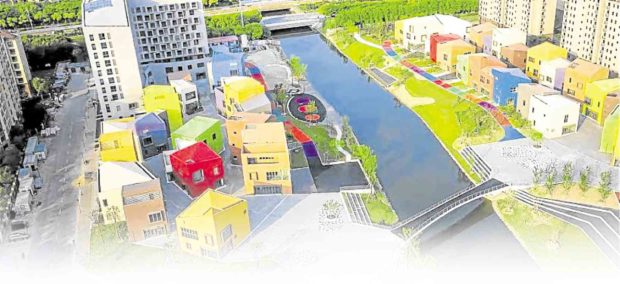
Take the case of the Philippines where practically every city or highly urbanized town is brimming with shopping malls, retail rows, commercial centers and even weekend markets often filled to the brim with an interesting, diverse mix of homegrown and international brands.
While this signals a healthy economy and a market with ample wealth to afford more luxuries, it also presents a new challenge to the mall developer. When you have cities already glutted with all forms of these marketplaces, how do you draw the crowds to your own mall?
It’s all about creating and providing today’s discerning market with a unique experience, according to Colliers International Philippines, whether through attractions, architecture, design or selection of retail, dining and entertainment offerings for the market.
“Creating unique destinations with program-driven experiences is just as important as the physical structures such as permanent attractions, architecture and design,” explained Karla Domingo, Colliers Philippines’ associate director for advisory services. “Hence, it’s important to make sure that developers create a sound business plan based on a clear understanding of market demands.”
Filipino lifestyle
If there’s one distinct advantage that Philippine property developers continue to enjoy and can take advantage of is that shopping malls have become an integral part of the Filipino lifestyle, even serving as de facto public spaces due to the lack of parks in Metro Manila. Also, while e-commerce has been disrupting traditional retail, Filipino consumers are mostly “experiential” in that they enjoy seeing and feeling the items and receiving face-to-face service.
But there’s no room for complacency. In fact, now more than ever, mall developers will need to step up and raise the bar as competition becomes tougher and stiffer than ever.
“Over the past 12 to 24 months, Colliers has observed an increased effort among Metro Manila malls to differentiate. Mall operators, for instance, have been using pockets of vacancies to incorporate a lifestyle-centric retail mix to retain old consumers and appeal to a younger profile of mall-goers,” Colliers Philippines said. “There are opportunities as developers have been aggressive in renovating spaces and housing experiential and lifestyle-centric tenants to improve consumers’ retail experience and sustain footfall.”
Differentiators
Colliers further opined that shoppers will likely be drawn to physical malls if retailers offer a wide array of food and beverage (F&B) options; spacious public seating; interactive kiosks and pop-up stores; Instagrammable spaces; and limited-edition items. Other differentiators may also include an airconditioned chapel; organic vegetable garden; a gourmet food hall; and an expansive retail space for bazaar tenants.
F&B retailers, which account for nearly 40 percent of incoming tenants in malls across Metro Manila, are expected to sustain retail space absorption. For Filipinos, food will remain king.
“Despite disruptive technologies that redefine the way we shop, retail space absorption from F&B firms is likely to dominate while clothing and footwear will cover about 17 percent of tenants due to occupy space from 2019 to 2021,” Colliers Philippines said.
One of the evolving trends in F&B is the reinvention of food courts in malls, from affordable dining options to a destination experience. Examples include the opening of Century City’s Hole in the Wall in 2014, followed by Podium’s Corner Market and the Power Plant Mall’s The Grid in 2018. The most recent iteration is Glorietta’s Food Choices, which has undergone a six-month revamp.
“These food courts have incorporated unique themes and modern design, creating a destination within the mall that functions as a public park, where people can spend longer periods of time dining, working, and even shopping. This demonstrates the developers’ strategy to create more impact through visitor engagement, footfall and spending,” Colliers added.